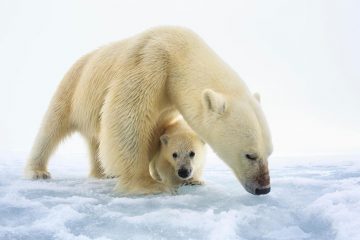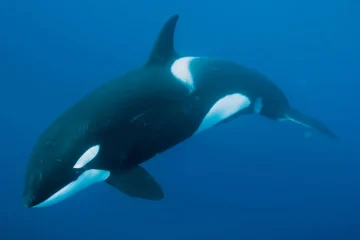We don’t need to time travel to 2050 to imagine the impact of climate change. The air quality would have depleted so much that one wouldn’t be able to walk out of the house without an air-filtration mask. All living creatures would be plagued by extreme heat waves now and then. Ice-free Arctic summers would be a reality and sea levels would have risen to flood small islands such as ours. Changes in water temperature would have caused algae to leave coral reefs, resulting in coral bleaching and making them vulnerable to disease and death. Several plants and animals would have lost their habitats over the years leading to the reduction in biodiversity down to a smidge. People from underdeveloped nations would be turning to developed ones in desperate need of clean drinking water, food, and shelter, while those countries also face the wrath of climate change in the form of wildfires, hurricanes, and floods. People will be full of despair due to the poor quality of their lives, resenting previous generations for their lack of action.
This possible widespread suffering is not due to some unforeseen catastrophe that would hit us sometime in the future. It is due to a crystal clear imbalance in the environment that is growing slowly, but steadily every minute of the day called climate change. If we are to make the above scenario just a horrible tale of fantasy it is critical for every individual to take action today making this the most important decade in the history of humankind.
Carbon dioxide and Climate change

Carbon dioxide is planet Earth’s most important greenhouse gas. A greenhouse gas has the property of absorbing infrared radiation emitted from the Earth’s surface and reradiating it back to the Earth’s surface, thus contributing to the greenhouse effect. Without carbon dioxide, our planet would not be able to keep the average global surface temperature above freezing. The problem today however is that the natural balance of this gas has been broken over the last century, resulting in the greenhouse effect being boosted and thereby causing an exponential increase in the earth’s temperature. In short, human emissions of carbon dioxide are a primary driver of global warming leading to climate change.
Carbon dioxide emissions
The CO2 concentration in the atmosphere has been rising since the Industrial Revolution. Even though human sources of Carbon dioxide emissions are much smaller compared to natural emissions, since natural sinks like the ocean, soil, and forests remove around the same quantity of carbon dioxide from the atmosphere that is produced by natural sources. Hence the natural balance is affected.
Human activities such as the burning of fossil fuels like oil, coal and gas, deforestation, large-scale agriculture, industries like cement manufacture, and improper disposal of waste have significantly upset the natural balance of the atmosphere. Total global CO2 emissions have climbed by approximately 0.8% in the past year, but they remain below the high set in 2019 and have been relatively flat since 2015. The total CO2 emissions from the burning of fossil fuels and cement, however, hit a record high in 2022. The rise has mainly been driven by an increase in oil emissions as international travel recovers following the pandemic.

Studies have shown that countries most vulnerable to the effects of climate change are often some of the lowest emitters of CO2. While countries like China, the USA, India, Russia, and Japan are the top five Carbon dioxide polluters.

How can we reduce CO2 emissions?
To slow down rising global temperatures with the eventual aim of halting them, we need to stabilize concentrations of CO2 in the Earth’s atmosphere. And in order to do that, the world needs to reach net-zero emissions. This requires large and fast reductions in emissions. Becoming more energy efficient, reducing the fossil fuel impact by using public transport, electric vehicles, or bikes, cutting down the household waste produced, and recycling the waste are some of the small steps all of us can take to reduce our carbon footprint.
Planting new forests can counterbalance half of the deforestation emissions while stopping or slowing deforestation and restoring or expanding existing forests can help better balance the carbon dioxide concentrations. All industries switching to renewable energy sources such as solar power, wind power or biofuel can also make a great impact on the amount of CO2 produced. In order to do this, it is also essential to cut down the higher costs that come along with greener alternatives known as the green premium. Research and development in this area to bring down this cost are also essential to be able to get to zero emissions.

The ultimate goal
Even though there is an International Day against Climate change, since 2021, the 28th of January is commemorated as the International Day for Reducing CO2 Emissions. This depicts the large impact CO2 emissions have on climate change. The 28th of January is a day to raise awareness and encourage and influence people all over the world to do their part in taking care of the environment and the planet by reducing their carbon footprint. One should learn and update their knowledge about CO2 emissions, study ways to reduce emissions, spread the word about this day and educate more people about the dreadful future that awaits us if we do not take necessary measures immediately.
This day helps us recognize the impact every small choice we make has on the planet. We as individuals are reminded of the outcomes of our daily actions. And also we urge everyone to take the essential steps to do our part in protecting our planet. Large corporations and industries are nudged into action as the whole world turns its attention to this issue and becomes aware of the consequences and the urgency around the subject. It takes a village – in this case, the entire world – to make a sizable impact. So let’s all do our part to protect our planet.

Written By:
Sayagi Asogan,
3rd Year Undergraduate,
Department of Chemistry,
Faculty of Science,
University of Colombo.
References:
- Isaacs, M. (2020, December 30). What happens if the levels of atmospheric CO2 double? My Emissions. https://myemissions.green/what-happens-if-the-levels-of-atmospheric-co2-double/
- Our planet is warming. Here’s what’s at stake if we don’t act now. (n.d.). World Wildlife Fund.
- sidra.ghazali@topagency.com. (2022, March 7). INTERNATIONAL REDUCING CO2 EMISSIONS DAY – January 28, 2023. National Today. https://nationaltoday.com/international-reducing-co2-emissions-day/
- Global CO2 emissions from fossil fuels at new record in 2022. (2022, November 11). World Economic Forum. https://www.weforum.org/agenda/2022/11/global-co2-emissions-fossil-fuels-hit-record-2022/
- Ritchie, H. (2020, May 11). CO2 emissions. Our World in Data. https://ourworldindata.org/co2-emissions
Image Courtesy:
- Title Image: https://bit.ly/3wzwdUq
- 1st Content Image: https://bit.ly/3wC05Qg
- 2nd Content Image: https://bit.ly/3DkZoyq
- 3rd Content Image: https://bit.ly/3Jobvig
- 4th Content Image: https://bit.ly/3XHBaqv
- 5th Content Image: https://bit.ly/3JobISA



0 Comments